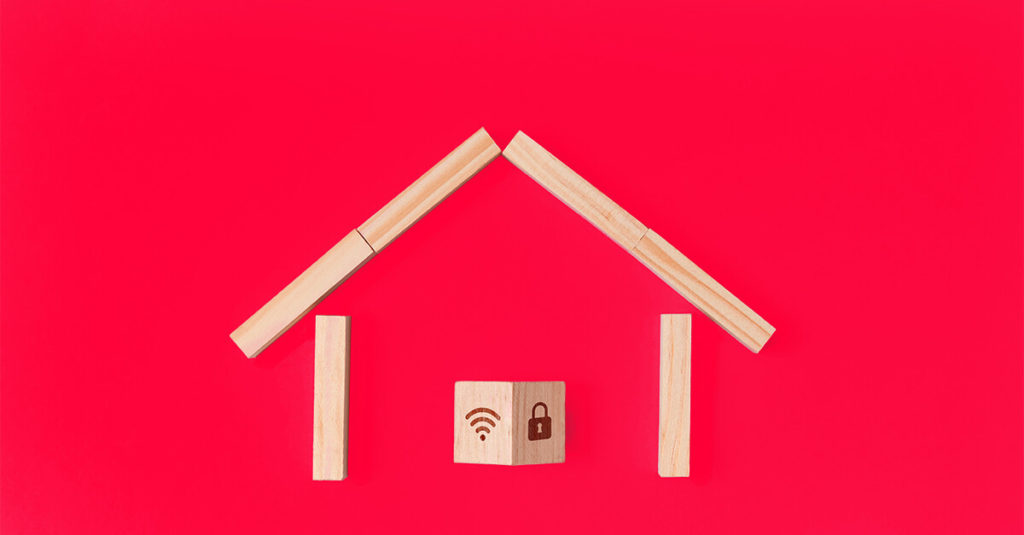
Choosing the Right DIY Security System for When You Go Back to Work
If you’ve spent the last year working from home, you might be concerned about going back to the office and leaving everything unattended and vulnerable to theft—especially any new home office equipment or nifty smart devices you’ve bought during the pandemic. With the right DIY security system, though, you can put your mind at ease.
The best DIY home security systems are as good as any professional system, and you install all the motion detectors, cameras and the like yourself. If you’ve set up an Amazon Alexa or something similar, you’re more than capable of pulling it off.
What’s the difference between a DIY security system and a professional security system?
With a traditional, professional home security system, a technician comes to your home, assesses your needs and installs everything for you. You’re then locked into a contract (sometimes a multiyear contract) that includes features like 24/7 professional monitoring.
With a DIY system, you assess your own security needs, buy the right devices for you and install all the (mostly wireless) gadgets and gizmos yourself. Once you’ve done that, you generally aren’t locked into any contracts—unless you want to sign up for professional monitoring or other extras.
DIY systems have a few big advantages over professional systems:
- You get to choose exactly what security devices you want to use.
- You can add more devices, like additional cameras or motion sensors, over time.
- The devices can integrate with your other smart home products.
- A DIY system is more affordable to get started with, and any contracts are optional.
What DIY security equipment can you get?
There is a wide variety of DIY security equipment available.
Basic starter kits normally come with a base station that connects all your security devices together, a keypad for activating and deactivating your alarm, contact sensors for securing your doors and windows, a motion sensor for detecting intruders and perhaps a camera.
Some of the best wireless DIY home security starter options are:
Unless you live in a very small apartment, a starter kit probably won’t be enough to secure your home entirely. You can buy more contact sensors and motion sensors, plus there are loads of additional security devices you can add to your system, including:
- Indoor and outdoor security cameras, so you can visually check your home.
- Range extenders to connect more devices around your house.
- Sirens to scare off anyone who breaks in.
- Smart locks, so you can automatically lock your house when you leave, deactivate your alarm when you come home and even remotely allow people access.
- Smart doorbells, so you can see who’s knocking at the door.
- Glass break sensors that detect when a window is broken.
- Carbon monoxide, smoke, flood, freeze and other environmental alarms for non-burglar home protection.
- Panic buttons, in case you need to trigger your alarm yourself.
In short, provided you have the budget, you can build an epic security system that keeps your home as secure as can be with as many cameras, motion detectors and sirens as you want. It can send alerts to your smartphone (or smart watch!) to let you know when someone leaves a package at your door, that there’s a pan smoking in the kitchen or that there’s an intruder in your house.
Can I integrate my security system with my smart home?
One of the biggest advantages of DIY security systems is that they can integrate with existing smart home setups.
If you have an Amazon Alexa, Google Home or other smart speaker, you can control most DIY alarms with voice commands. It’s pretty cool to be able to tell your alarm to set itself as you go to bed, ask if the front door is locked or automatically turn on your lights when you turn off your alarm as you come in from work. Similarly, other smart home products like smart locks integrate with security systems.
Of course, as with all things smart home, compatibility can be an issue. Ring devices can work with Google Home, for example, but they work better with Echos or other Alexa devices, as both are Amazon products. Similarly, August smart locks are directly compatible with SimpliSafe setups, while Kwikset smart locks aren’t. It’s not that you can’t get a Kwikset smart lock to work with your SimpliSafe alarm, but it’s likely to involve more complicated workarounds using other services like IFTTT or Alexa.
If you already have a few connected smart home devices, it’s worth choosing a DIY security system that is fully compatible with them. Do a bit of research before purchasing to check that everything will play nice.
Do I need professional monitoring?
While you don’t need to sign up for a professional monitoring contract with a DIY security system, it can be a good idea. The problem with running your own self-monitored security system is that if you miss a notification on your smartphone to check a camera, a burglar could run away with your TV!
With professional monitoring, a security professional in a 24/7 monitoring center will check your camera, see something is up and alert the authorities and then call you to make sure you know. It adds a lot of peace of mind.
Most DIY security services offer contract-free professional monitoring packages for a few dollars a month. Check out the basic monitoring packages from SimpliSafe or Wyze.
How do I get started?
Getting started with a DIY security system is really simple.
First, start with a plan. Decide what the purpose of your security setup will be. Do you want to secure all your windows and doors and be able to monitor everything with cameras? Or are you more concerned about your pipes freezing? This will determine a lot of the choices you make.
Next, assess your home. Work out how many of the different security devices you’ll need to get started, and what you can add later. Also, check if you’ll be able to run wires or whether you need an entirely wireless security system. Perhaps most important, look at what smart home devices you already have, as you’ll want to find a security system that’s compatible with them.
Once you have an idea of your needs, it’s time to get researching. Check out the starter kits from a few of the big names in DIY home security—Abode, Ring, SimpliSafe, Wyze, Eufy and Blue by ADT—to see what works best for you. Make sure to factor in the price of any additional sensors, as well as professional monitoring, if you plan to use it.
When you find the right kit, you’re well on your way to securing your home. These DIY options are designed to work right out of the box. Installation should be a matter of connecting everything to your Wi-Fi network and placing them in the right places around your home. And, just like that, you can sleep a bit better at night—and leave for work with peace of mind.
Product features may have changed and are subject to change.




Join the conversation